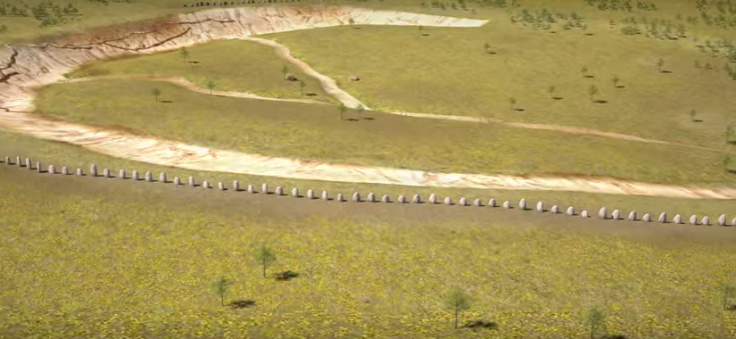Britain's Superhenge: Massive 4,500-year-old stone monoliths may be largest prehistoric monument ever found

The monument is on an "extraordinary scale" researchers said, with the ancient site five times the size of Stonehenge. The site is just under two miles from Stonehenge in Wiltshire and is thought to be a Neolithic ritualistic sacred space. The stones, some measuring 15ft (4.5m), are over four thousand years old and were found under 3ft of earth at Durrington Walls.
The Stonehenge Hidden Landscapes team has created an underground map of the area in a five-year-project. Ground-penetrating radar, remote sensing and geophysical imaging technology has revealed evidence of nearly 100 stones without excavation.
The exact purpose of the great ancient arena remains obscure but one theory is that it was a Neolithic ceremonial site. Archaeologists believe they may have found traces of springs and a valley leading into the River Avon.
"This discovery of a major new stone monument, which has been preserved to a remarkable extent, has significant implications for our understanding of Stonehenge and its landscape setting," said Professor Vincent Gaffney of the University of Bradford, who co-led the research.
"Not only does this new evidence demonstrate a completely unexpected phase of monumental architecture at one of the greatest ceremonial sites in prehistoric Europe, the new stone row could well be contemporary with the famous Stonehenge sarsen circle or even earlier."
Although no stones have been excavated from the Durrington Walls 'superhenge', they are believed to be made from sarsen blocks which are local. Made from sandstone, they are found on Salibsury Plain and the Marlborough Downs in Wiltshire.
Dr Nick Snashall, National Trust Archaeologist for the Avebury and Stonehenge World Heritage Site, said: "The Stonehenge landscape has been studied by antiquaries and archaeologists for centuries. But the work of the Hidden Landscapes team is revealing previously unsuspected twists in its age-old tale.
"These latest results have produced tantalising evidence of what lies beneath the ancient earthworks at Durrington Walls. The presence of what appear to be stones, surrounding the site of one of the largest Neolithic settlements in Europe adds a whole new chapter to the Stonehenge story."
© Copyright IBTimes 2024. All rights reserved.







